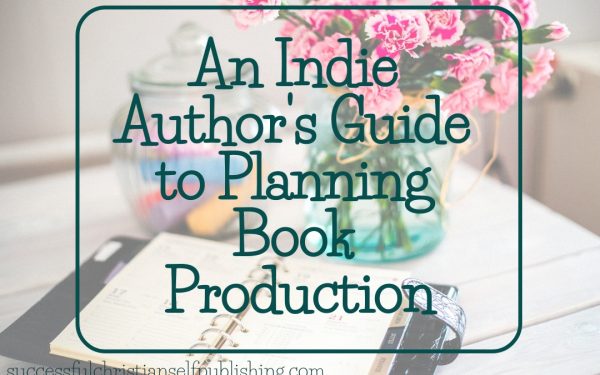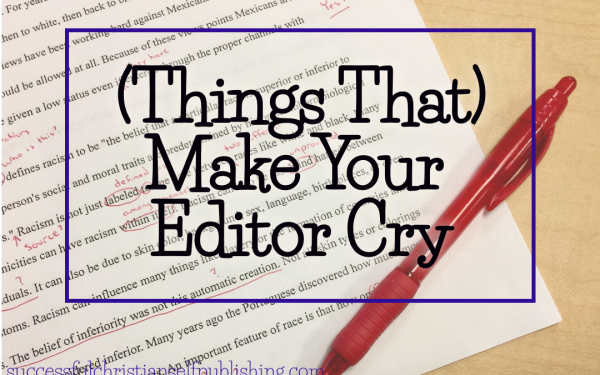Writing in Layers: Part 1
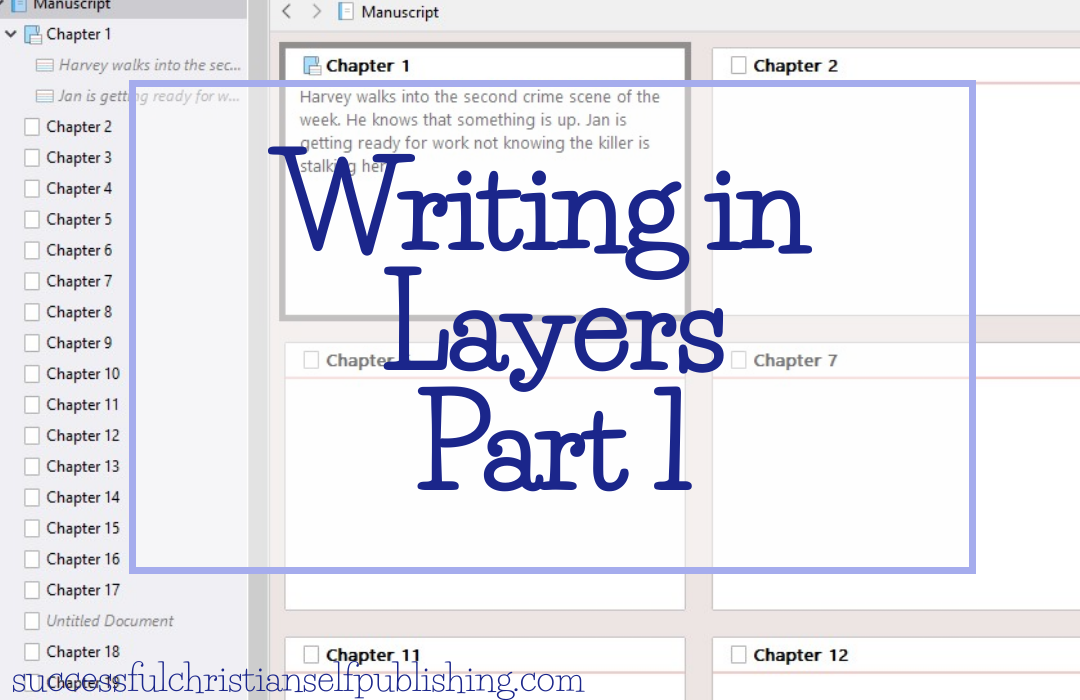
I have a reputation of writing very quickly. I had analyzed my process and started to develop a class, but I couldn’t put my finger on how present it when an artist friend posted a photo of her current work in progress with a caption that said, “layer 1 finished.”

Ding! Layers!
I write in layers the same way an oil painter paints in layers. Brilliant! I immediately contacted my friend and asked if she’d send me a picture of each layer of her painting.
Layer 1: The Black and White Sketch
I go into writing a book already knowing my characters, much like my artist friend has gone into painting this painting know what her subject is. So, I’ve already done my character research, I already know everything about them, and I already have my faith, romance, and, if necessary, suspense arcs of the project. See my post on Brainstorming Character Conflicts.
Once that is finished, it’s time do the plotting of the story. Basically, I think, “What happens in chapter 1?” Then I give a paragraph or two or three of the events that are going to unfold in chapter 1.
You can use all sorts of tools to do this. You can create an outline using Roman numerals and letters:
I. Chapter 1
A. In the first scene, Harvey is walking into the crime scene with the second murder victim that week.
B. In the second scene, Jan is getting ready for work without knowing the killer is stalking her
You can do a free-flowing style of text:
In chapter 1, Harvey is walking into the crime scene of a murder victim. It’s the second one that week. He knows something’s up. In the second scene, Jan is getting ready for work and doesn’t know the killer is stalking her.
You can use index cards with a card for each chapter.
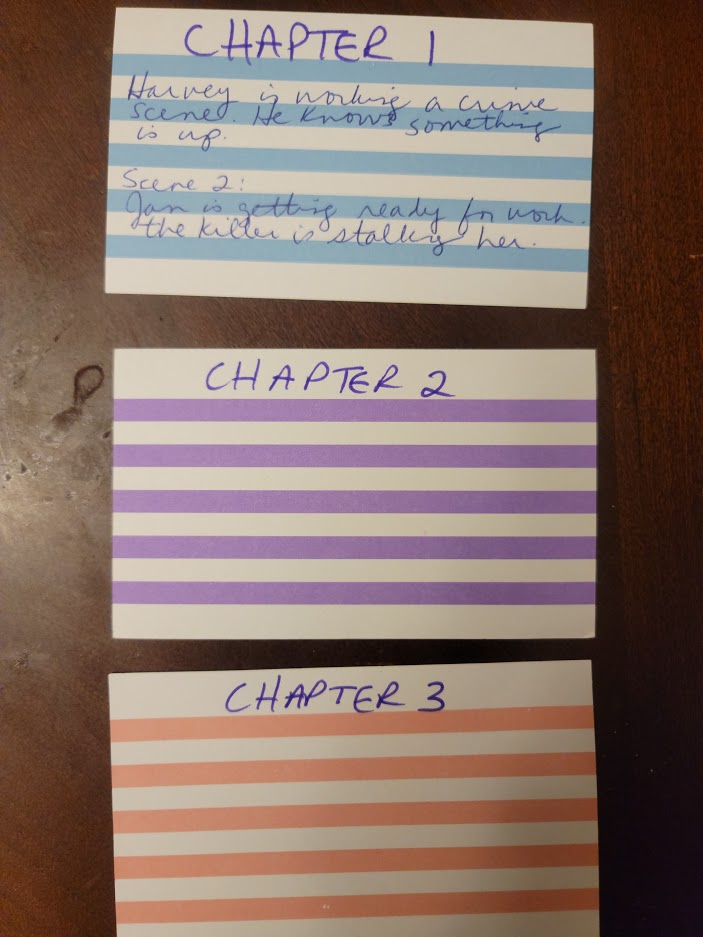
I personally use Scrivener. It kind of combines the idea of note cards and the free-flowing text.
I can do it chapter-by-chapter:
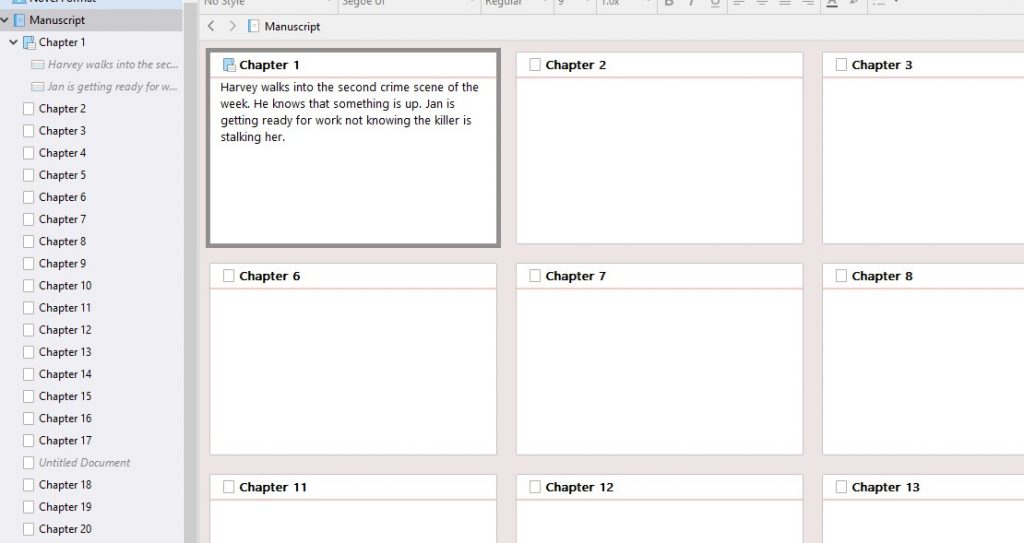
Or scene-by-scene:
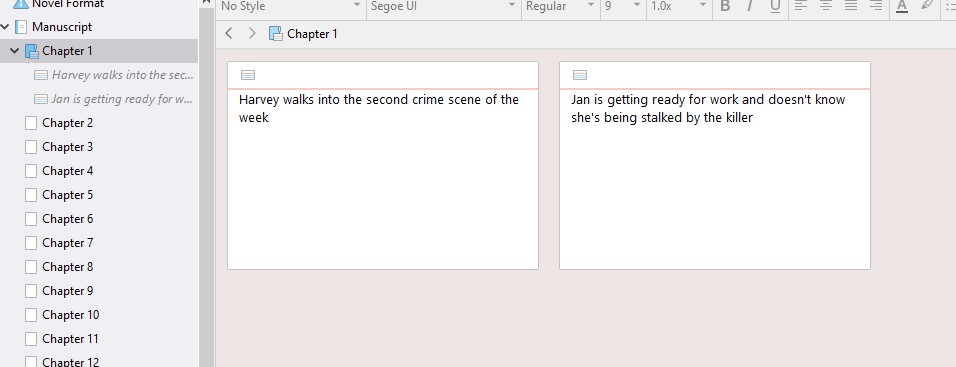
It’s basically the brain-dump of the whole plot. The reason I like Scrivener is because I can look at that chapter-by-chapter image and I can move those squares around, insert a square here and there — I can visually see holes in the plot and how to fill them.
Because I’m a visual organizer, this helps me. I could even color-code the squares just like I could use colored index cards.
The point is, I would recommend you do it in the way that works best for your brain — NOT the way that works best for my brain. And do the whole book at one time, all the way to the end.
We’ll tackle Layer 2 next week.

With nearly a million sales, Hallee Bridgeman is aUSA TODAY best-selling and award-winning Christian author who writes action-packed romantic suspense focusing on realistic characters who face real-world problems. Her work has been described as everything from refreshing to heart-stopping exciting and edgy. Hallee has served as the Director of the Kentucky Christian Writers Conference, President of the Faith-Hope-Love chapter of the Romance Writers of America, is a member of the American Christian Fiction Writers (ACFW), the American Christian Writers (ACW), and Novelists, Inc. (NINC). An accomplished speaker, Hallee has taught and inspired writers around the globe, from Sydney, Australia, to Dallas, Texas, to Portland, Oregon, to Washington, D.C., and all places in between. Hallee loves coffee, campy action movies, and regular date nights with her husband. Above all else, she loves God with all of her heart, soul, mind, and strength; has been redeemed by the blood of Christ; and relies on the presence of the Holy Spirit to guide her.

